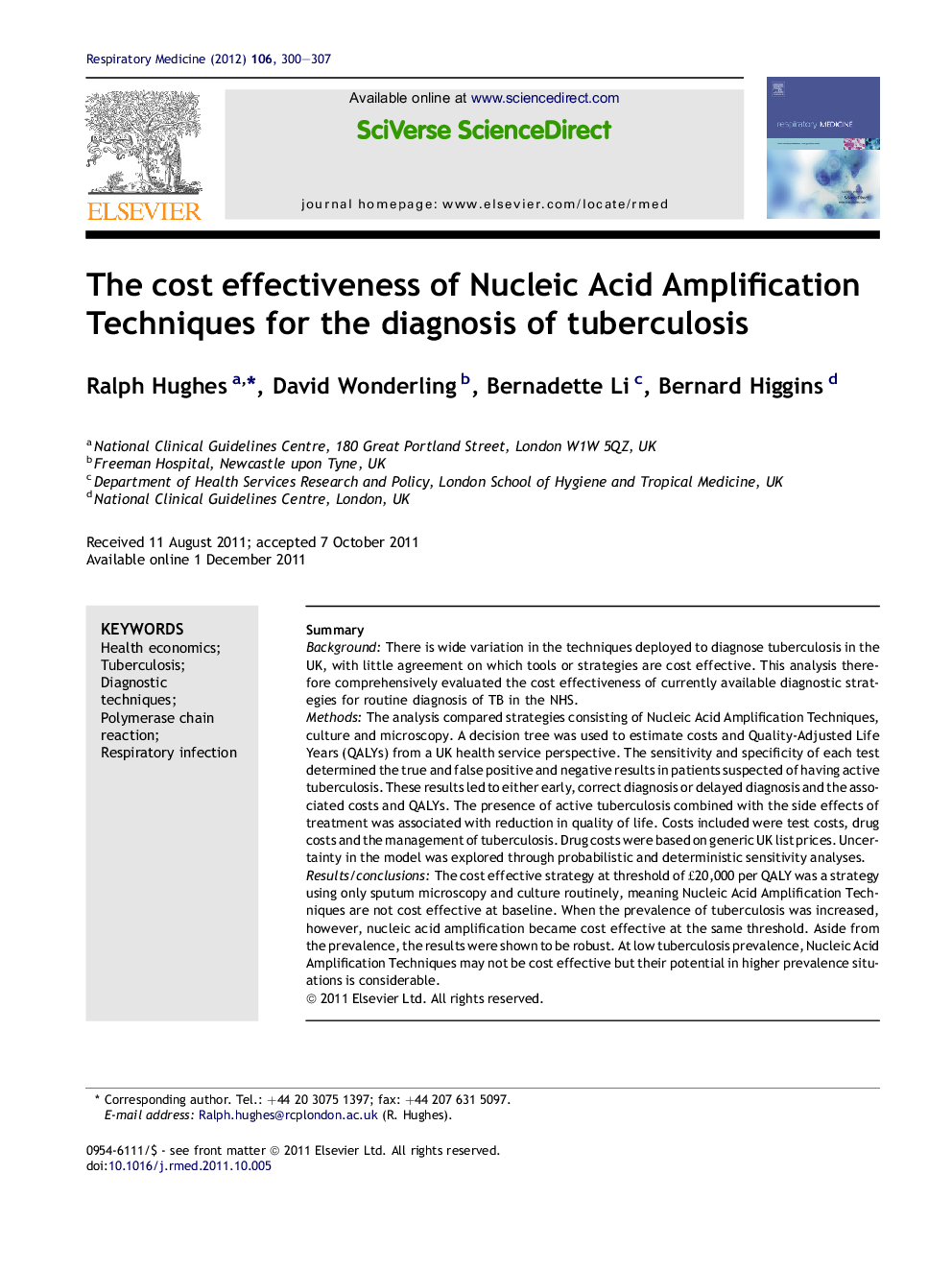| Article ID | Journal | Published Year | Pages | File Type |
|---|---|---|---|---|
| 4211065 | Respiratory Medicine | 2012 | 8 Pages |
SummaryBackgroundThere is wide variation in the techniques deployed to diagnose tuberculosis in the UK, with little agreement on which tools or strategies are cost effective. This analysis therefore comprehensively evaluated the cost effectiveness of currently available diagnostic strategies for routine diagnosis of TB in the NHS.MethodsThe analysis compared strategies consisting of Nucleic Acid Amplification Techniques, culture and microscopy. A decision tree was used to estimate costs and Quality-Adjusted Life Years (QALYs) from a UK health service perspective. The sensitivity and specificity of each test determined the true and false positive and negative results in patients suspected of having active tuberculosis. These results led to either early, correct diagnosis or delayed diagnosis and the associated costs and QALYs. The presence of active tuberculosis combined with the side effects of treatment was associated with reduction in quality of life. Costs included were test costs, drug costs and the management of tuberculosis. Drug costs were based on generic UK list prices. Uncertainty in the model was explored through probabilistic and deterministic sensitivity analyses.Results/conclusionsThe cost effective strategy at threshold of £20,000 per QALY was a strategy using only sputum microscopy and culture routinely, meaning Nucleic Acid Amplification Techniques are not cost effective at baseline. When the prevalence of tuberculosis was increased, however, nucleic acid amplification became cost effective at the same threshold. Aside from the prevalence, the results were shown to be robust. At low tuberculosis prevalence, Nucleic Acid Amplification Techniques may not be cost effective but their potential in higher prevalence situations is considerable.
